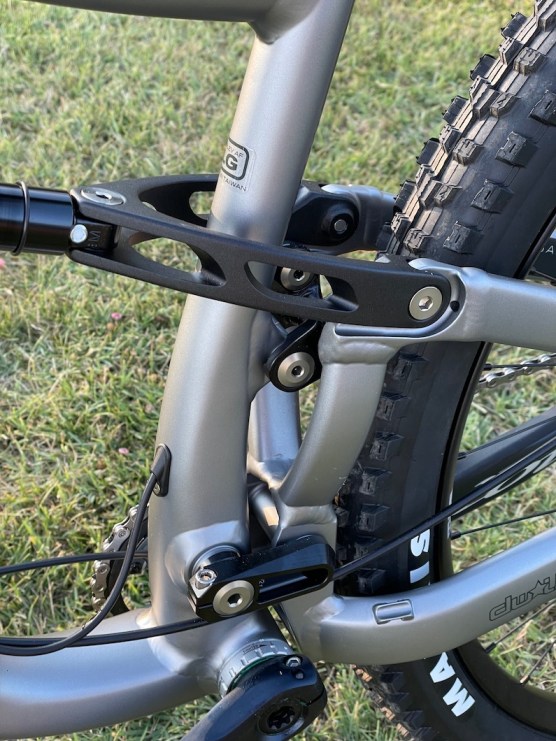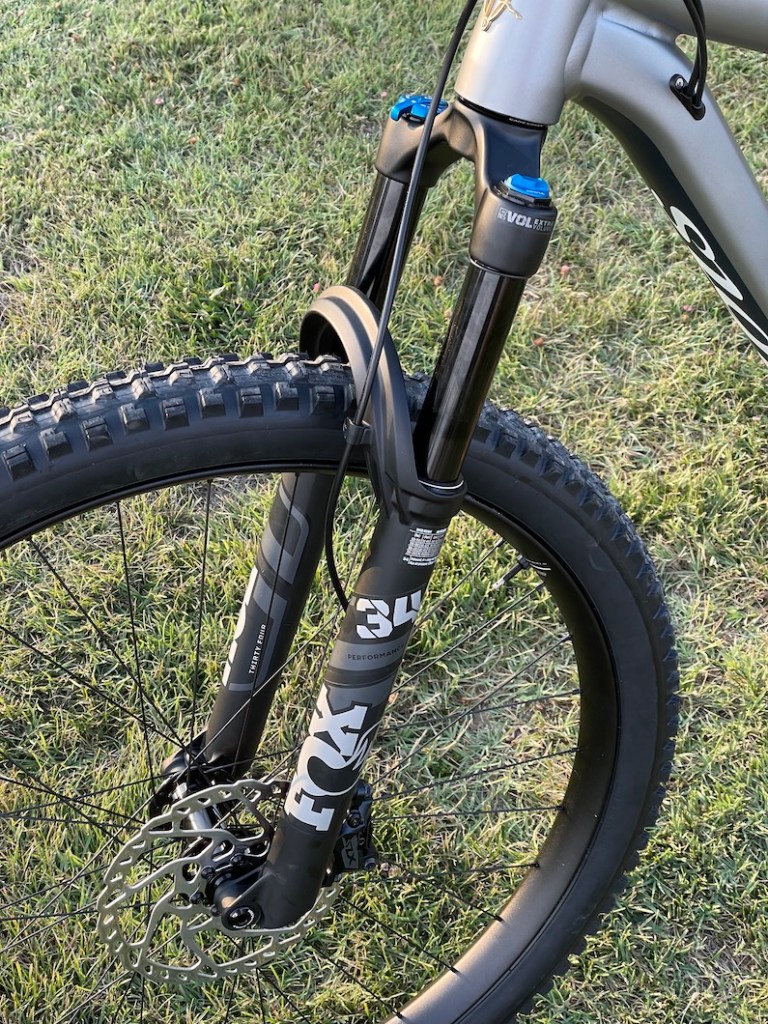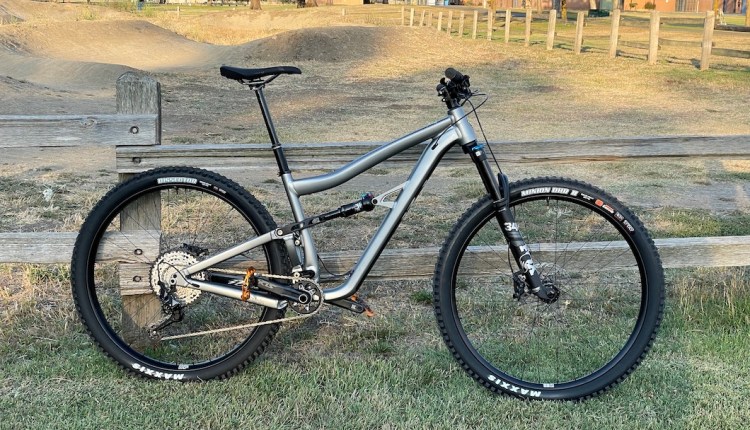Were someone to undertake to create a series of pie charts showing the breakdown in cost of each component in a bike, the slice that represents the frame would grow and shrink through the myriad bikes on the market. With a handmade titanium or steel bike, it may be half the bike’s cost. With today’s e-bikes, the frame wouldn’t be the most expensive part of the bike. I mention that as I get into this review of the Ibis Ripley AF because Ibis has pulled off something that has seemed increasingly elusive.
Just what have they pulled off? Producing a full-suspension mountain bike that works well and will last longer than a single season for less than $4000. Before someone starts screaming at their monitor, I’ll hasten to add that they aren’t the first to do this; they have company. But what they do have is a design that makes this bike competitive against anything else near this price point.

The Ibis Ripley AF takes the Ripley’s handling, suspension (DW-Link) and design lines and merges them with aluminum, with one slight hack: The Ripley AF has a head angle that is one degree slacker than the carbon fiber Ripley—65.5 instead of 66.5.
I’m a fan of aluminum for mountain bikes. It reduces cost and improves durability. That’s great for anyone on a budget and it’s especially good for anyone new to mountain biking. To borrow a term from baseball, unforced errors constitute an essential part of the new mountain biker’s experience. Get-offs, ditches and saves make up the bulk of the novice’s education, which is to say that wisdom demands some time investment.
More means less
Setting aside cost for a moment, there’s a question anyone considering a full-suspension mountain bike should ask—if they intend to stick to a budget. Honestly, it’s the same question anyone buying a bike should ask: What is your priority?
To be fair, there are four big features that someone buying a bike may choose to set as their top priority. Obvs, these come in an order, but that doesn’t indicate any sort of prioritized order of pecking. There’s the frame and its underlying quality, into which we will toss geometry, materials and build quality. There’s also the components spec’d on the bike. Then, of course, there’s price. And finally, there’s finish. If this seems like a frivolous point of consideration, let’s be generous. When I was in retail I told my customers: “I’ve never bought an ugly bike. I don’t expect you to, either.” If someone likes the blue bike best precisely because it’s blue, that’s fine. Cycling is a sport that trades on emotion, and empathy and respect demand that I pay out slack to finish.
Having said all that, we can add a wrinkle to point one: Suspension design. It is absolutely acceptable to pick a mountain bike based on its suspension platform. The more I ride different full-suspension mountain bikes, the more I come back to my love for DW-Link.
(A brief aside: In another piece, I plan to take on my struggle to decide which of two mountain bikes I should jettison: My Evil Following or my Ibis Ripley AF—the bike of this very review. Here’s the thing: The Evil is lighter, features pricier components, looks hot—mine is a V2—and has really terrific handling in tight quarters. The Ibis has DW-Link.)

Parallels
I often chose road bikes according to how they rode. When I ordered my Bishop, we had a long conversation about the handling qualities I value. I didn’t give two matchsticks about what tubing he used. If he selected tubes that resulted in a loss of two ounces over another tube set … terrific. But that wasn’t my concern. I wanted a bike with which I could interface as seamlessly as an AC cord in a wall outlet.
I submit that the mountain bike equivalent to that has more to do with suspension than it does the bike’s geometry. (Do I hear villagers come up my driveway with pitchforks and torches?) Short of moving to a suspension design with less travel or one with sophisticated valving (like Scott’s TwinLoc), I’ve yet to ride anything that provides a more stable pedaling platform than DW-Link. Honestly, folds, I’ve tried to like other systems the way I like Dave Weigle’s DW-Link. But I get on a mountain bike with DW-Link, and the first think I notice about the bike is how well it pedals. And maybe that’s the real measure: What’s the first thing you notice about the bike?
With DW-Link bikes (the two most prominent licensees of DW-Link are Ibis and Pivot), I never experience that collapsing of the rear suspension that leaves me feeling like I’ve leaned back too far in my chair and am millimeters from falling backward. Preposterous, right? But that’s the feeling I get on a Trek Fuel, for example. This is an inherent quality (failing?) of any single pivot design. Four-bar linkages do more to disguise their movement than single-pivot designs, no matter how the pivot is managed.
I got this
The geometry numbers for all four sizes of the Ripley AF are really good, but generally unremarkable. A head tube angle of 65.5 degrees is not groundbreaking. The 76-degree seat tube angle was a big shock the first time Ibis did that, but it is no longer an outlier. The 33.5cm BB height is in keeping with many other bikes. What is a surprise? The 44mm rake. Most forks are spec’d as 51mm, but going with a shorter-rake fork helps calm the handling a bit at high speed.
I own both a carbon fiber Ripley and a Ripley AF and I can report that the difference in head tube angles (65.5 degrees for the Ripley AF and 66.5 degrees for the carbon Ripley) rises above the threshold of perception. There are a couple of very fast, reasonably straight (though not entirely straight) sections of trail where the pro move is to let the bike run and get your ass back and just trust the bike. Like I said, I can feel the difference between the two. Ibis’s decision to go with a 65.5 degree head tube angle on the Ripley AF reflects the company’s evolving view of head tube angle. When I last spoke to Scot he said they were still very happy with the existing carbon fiber Ripley. I’ll get into the deeper differences between the two Ripleys in a different piece, but I can say my experience may surprise some people.

Affordable
The Ibis Ripley AF can be purchased as a frameset ($2199), with a Deore 12-speed build ($3499), in a SRAM NGX version ($3499) and spec’d with Shimano SLX ($3999). I purchased mine with the Shimano SLX group because I’d already reviewed Deore and the NGX build was out of stock.
Final thoughts
The Ripley AF rides like a bike of a different class. Were it not for the additional weight from the aluminum frame, I don’t think people have any reason to criticize this frame. I’m unsurprised that Shimano made a group of components that surprised me with how top-notch their performance was; that’s my history with Shimano. The Fox fork and shock combined with the DW-Link suspension design rides above its category.


